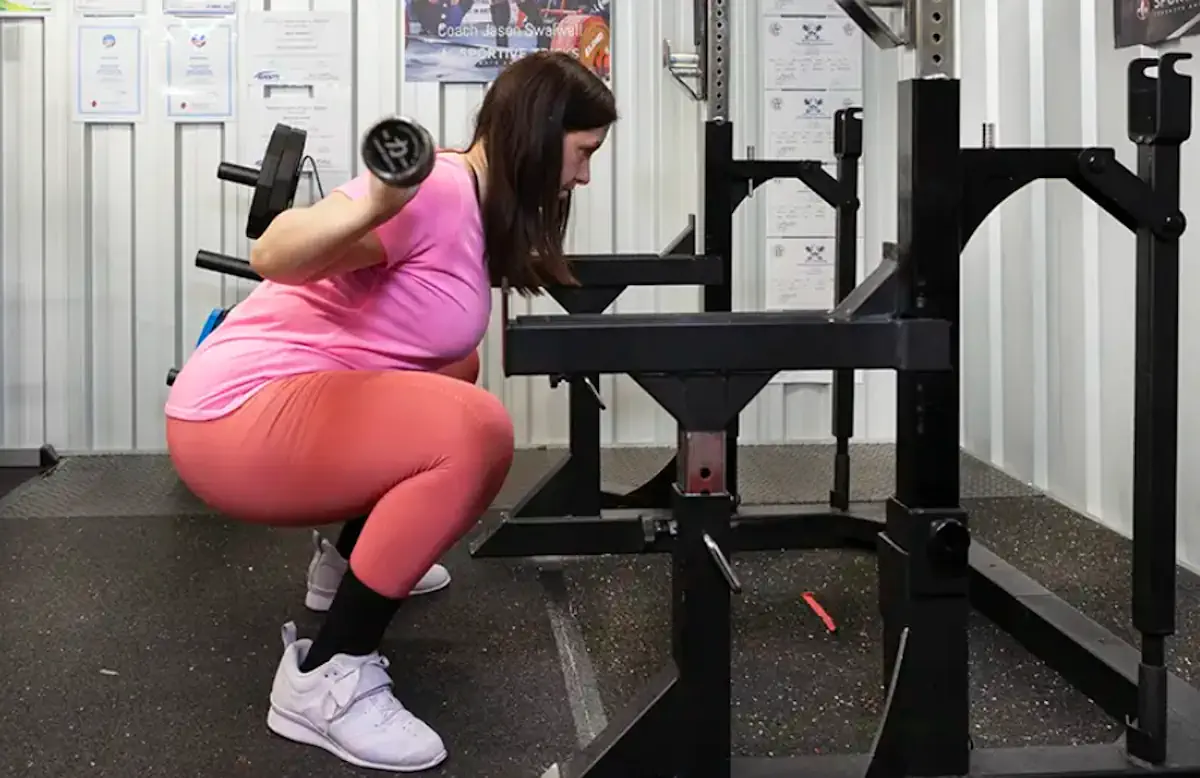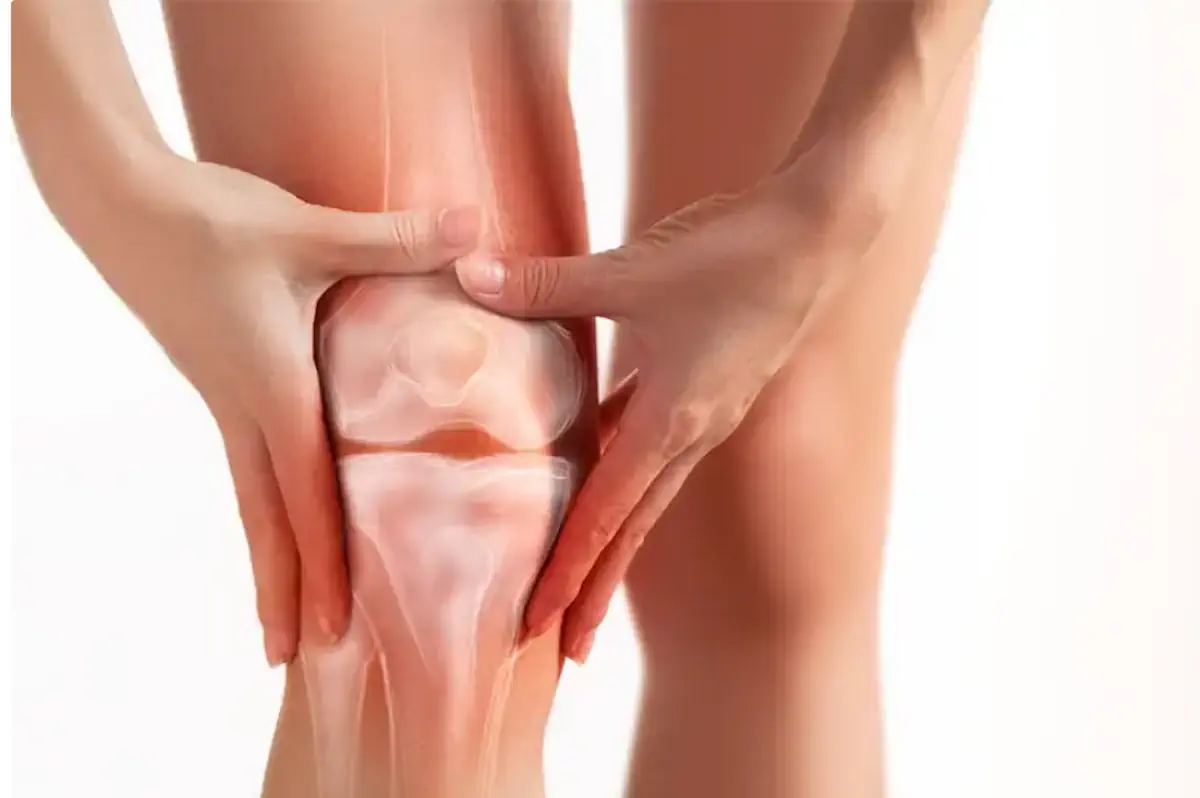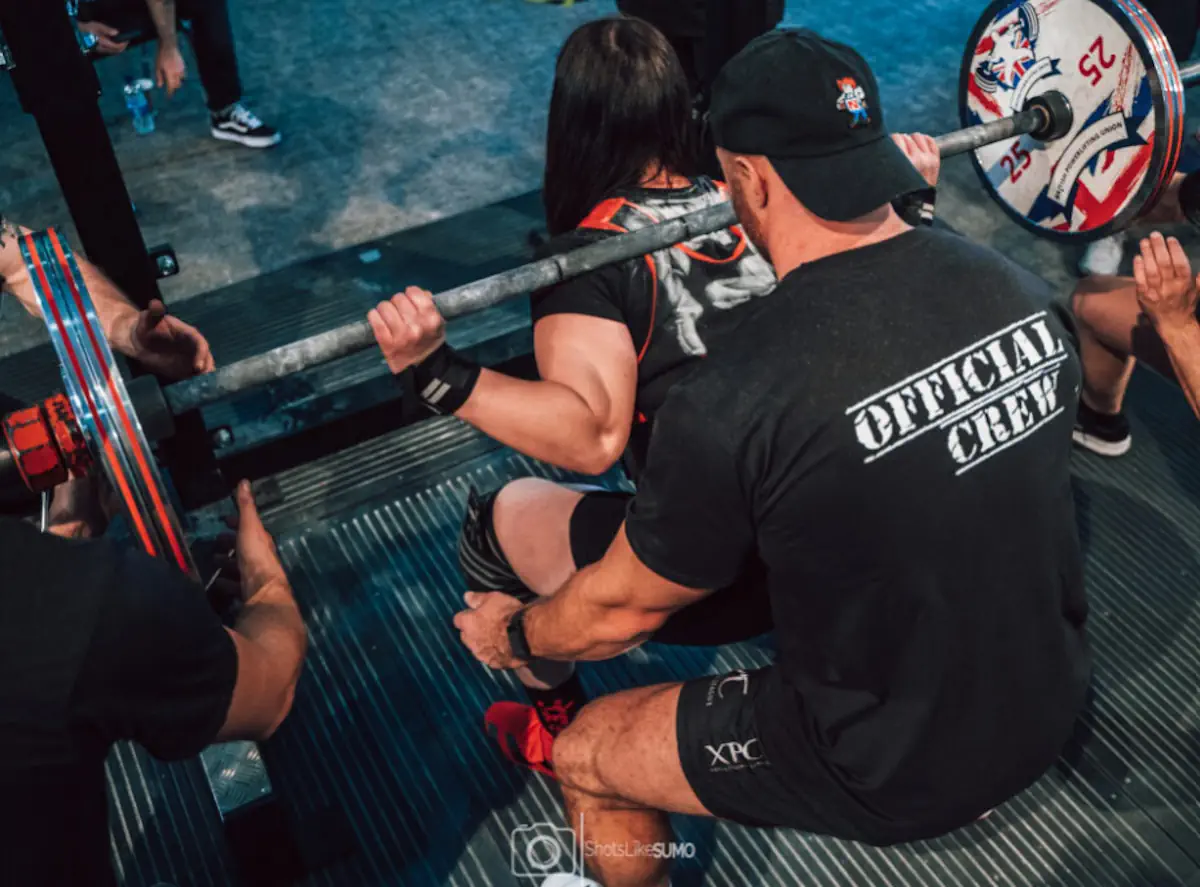6 Key Advantages of Low Bar Squat for Powerlifting

What's In This Article
- Key Highlights
- Introduction
- 1. Enhanced Posterior Chain Activation
- 2. Improved Mechanical Leverage
- 3. Reduced Knee Stress Compared to High Bar Squats
- 4. Strengthening the Lower Back
- 5. Translational Benefits for Powerlifting
- 6. Improved Hip Drive With Low Bar Squats
- Conclusion
- Frequently Asked Questions
- References
- Resources
Key Highlights
- The low bar squat position activates posterior chain muscles more effectively than other squat variations.
- These squats provide better mechanical leverage for lifting heavier weights by creating a shorter moment arm.
- The forward lean and barbell placement squats enable lifters to handle significantly greater loads than other squat variations.
- Low bar squats reduce knee stress by limiting forward knee displacement compared to high bar squats.
- The exercise significantly demands and strengthens the lower back muscles, particularly the erector spinae.
- These squats have direct carryover benefits to powerlifting performance across all three competition lifts.
- The movement pattern enhances hip drive, improving explosive power in various athletic activities.
Introduction
The low bar squat, a key in strength training and powerlifting, is known for its unique biomechanics and effectiveness. Positioned on the posterior chain, it shifts the center of gravity, empowering lifters to utilize muscle groups essential for force generation.
This squat differs from other barbell squats in that it positions the barbell below the rear delts, promoting a forward lean to engage posterior chain muscles efficiently. This stance is crucial for powerlifters, offering a more horizontal back squat position that reduces knee stress and allows for lifting heavier weights..
The low bar squat technique emphasizes barbell position, starting point, and trunk stability. It requires shoulder mobility for the lower barbell position, ankle mobility for depth, and maintaining midfoot contact. This variation involves a bent-over torso and a less vertical bar path than front or SSB squats.
Sebastian Oreb, known as the Australian Strength Coach, emphasizes proper setup. He recommends:
- Creating optimal shoulder and upper back tension.
- Correct bar placement and forming a "shelf" between the traps and rear delts are crucial.
Matt Reynolds, another strength coach, advises:
- Bending over more than you might think is necessary for proper form.
- This forward lean helps keep the bar over your midfoot and engages hip muscles effectively.
This squat is versatile in personal training and athletic development. Not only does it aid in increasing muscle mass, particularly in the lower body, but it also contributes to enhanced sports performance through improved hip mobility and intra-abdominal pressure creation.
1. Enhanced Posterior Chain Activation
The posterior chain, a collective term for the muscle groups located at the back of the body, plays a pivotal role in various strength movements and daily activities. This chain includes vital muscles such as:
- The glutes
- Hamstrings
- Spinal erectors.
These are essential for activities requiring pulling, lifting, and stabilisation. Developing these muscles is crucial for athletic performance, overall functional fitness and injury prevention.
Low bar squats are particularly effective in activating these posterior chain muscles:
- The specific position, which involves placing the barbell lower on the back, across the rear deltoids, inherently changes the lifter's biomechanics.
- This adjustment in barbell placement and the accompanying forward lean of the torso significantly increase the involvement of the glutes and hamstrings.
- Unlike high bar squats or front squats, where the more vertical position emphasises the quadriceps, the low bar squatting technique shifts the focus to the posterior chain.
- A 2021 study by Larsen et al. stated that "The main findings were that squatting with a low-bar wide stance condition resulted in larger hip contributions to the total moment than the other squat conditions, whereas squatting with a high-bar narrow stance resulted in greater knee contributions to the total moment together with higher vastus lateralis and less gluteus maximus myoelectric activity."
The engagement of the posterior chain in low bar squats is not just about muscle activation but also about the development of functional strength and power:
- By targeting these muscles, lifters can experience improvements in other lifts and athletic movements that rely heavily on the posterior chain, such as deadlifts and explosive jumping movements.
- This activation is crucial for powerlifters as it directly translates to competition performance.
- The increased load capacity in low bar squats contributes to bone density and connective tissue strength improvements. These benefits are crucial for athletes, particularly in sports where strength and power are paramount.

2. Improved Mechanical Leverage
The biomechanics of low bar squatting offer distinct advantages in terms of mechanical leverage compared to other squat variations. Central to this is the bar's placement and the resulting alignment of the body during the exercise.
- The barbell rests lower on the back in the low bar squat, just below the rear deltoids. This contrasts with the vertical position in the high bar position, where the bar sits atop the traps, leading to a more upright torso.
- The low bar position induces a forward lean in the torso, aligning the barbell over the midfoot. This alignment is crucial for maintaining balance and stability throughout the movement.
- The forward lean reduces the moment arm, the distance between the barbell and the hip joint. A shorter moment arm means the hips and lower back muscles exert less effort to stabilise and lift the weight.
- This biomechanical advantage enables lifters to handle more and lift heavier weights in the low bar back squat than other variations like the high bar back squat or the front squat, where the longer moment arm demands more from these muscle groups.
- These mechanics prioritize activating the posterior chain, engaging the glutes, hamstrings, and spinal erectors to distribute the load efficiently for lifting heavier weights.
- A 2021 study by Kristiansen et al. concluded that "low-bar squats allowed the greatest loads to be lifted, followed by the high-bar and safety-bar squats, possibly due to the larger hip moments and similar knee moments compared to the other squat conditions. Therefore, when the goal is to lift the greatest load possible among recreationally trained men and women, they should first attempt squatting with a low-bar technique."

3. Reduced Knee Stress Compared to High Bar Squats
The impact of different squat forms on knee pain and joint stress is significant in strength training and rehabilitation. The low bar squat is often highlighted for its reduced stress on the knee joints among various squat variations. This feature is particularly significant for athletes and individuals seeking long-term joint health.
- In analyzing joint stress across squat forms, it becomes evident that the mechanics of the movement play a crucial role. In high bar squats and front squats, where the barbell is positioned in line with the upper traps or the shoulders, respectively, there is a tendency for a more upright torso position.
- This upright position translates to a greater knee flexion angle and, consequently, increased anterior (forward) knee displacement. Such displacement places a higher load on the knee, particularly on the patellar tendon and the anterior cruciate ligament (ACL).
- A 2022 Monteiro Pereira et al. study noted that forward knee translation in squats can contribute to patellofemoral pain syndrome.
- Contrastingly, its lower bar placement on the back prompts a forward lean in the torso. This forward lean aligns the torso more closely with the angle of the tibia, reducing the knee flexion angle and the anterior displacement of the knee.
- As a result, the shear forces on the joint are diminished in the low bar squat compared to other squat variations. The reduced knee stress is advantageous, especially for individuals with pre-existing knee or joint preservation concerns.
- Regular engagement in exercises that minimise undue joint stress can contribute to joint health and function longevity. This is particularly important for athletes who engage in high-volume or high-intensity training, where repetitive stress can lead to joint wear and tear.
- The low bar squat helps develop stronger glutes and hamstrings by effectively engaging the posterior chain muscles. These muscle groups are crucial in supporting and stabilising the knee joint, further contributing to reduced knee stress and overall joint health.

4. Strengthening the Lower Back
The role of the lower back in low bar squats is a critical aspect of this exercise, particularly concerning core stability and the development of lower back strength. This squat's distinct mechanics demand significant engagement from the lower back muscles, as shown by Glassbrook et al. 2017.
- This position places a more significant load on the back muscles, especially the erector spinae, which run along the spine. These muscles are crucial for maintaining spinal stability and resisting spinal flexion under the load.
- Compared to other variations, this increased demand on the lower back muscles in the low bar squat leads to a more significant strengthening of these areas. Regular engagement in low-bar squats, therefore, enhances the strength of the lower back and contributes to better spinal stability.
- Low-bar squats are instrumental in improving overall core stability. The core, encompassing the abdomen, lower back, and hip muscles, is integral for balance and force transfer in complex movements.
- The core must work cohesively to stabilise the body in these squats, given the forward lean and the necessity to maintain the bar path over the midfoot. This collective muscle activity fosters a strong core, essential for athletic performance and daily functional movements.
Strengthening the lower back through low-bar squats also has broader implications for an individual's overall fitness and health:
- Enhance posture and reduce the likelihood of lower back pain
- Improve performance in other compound exercises like deadlifts and overhead presses.
- A well-conditioned lower back is particularly beneficial for athletes engaged in sports that demand strength, stability, and power.
- The emphasis on lower back strength also aligns with functional training principles, preparing the body for similar stresses encountered in everyday activities and enhancing physical resilience.

5. Translational Benefits for Powerlifting
The relevance of low bar squats in powerlifting routines is profound, primarily due to how it translates to improved competitive performance. Tony Gentilcore, a respected strength coach, stresses that the low bar squat forces the lifter to utilize the most muscle mass possible.
As a powerlifting coach and world champion lifter myself, I can vouch for the power of low bar. I added 25kg to my squat in 5 months simply by switching to this technique and learning how to maximize the involvement of my glutes.
- Powerlifting, a sport centred around maximal strength in the squat, bench press, and deadlift, demands exercises that build strength efficiently and effectively. The low bar squat fits this requirement impeccably.
- Low bar squats emphasize posterior chain activation, aligning well with powerlifting needs. This variation strengthens the glutes, hamstrings, and spinal erectors, crucial for effective deadlifting—the cornerstone of powerlifting—with significant carryover between the two exercises.
- Incorporating low-bar squats into powerlifting routines enhances squat performance in competitions. Athletes training with these squats often see improvements in lifting heavier weights during powerlifting meets due to the exercise's unique strength and muscle adaptations.
- The low bar squat can enhance overall trunk stability and core strength, which are essential for all three lifts in powerlifting. A strong core and stable trunk contribute to a more solid base from which power can be generated during these lifts.
- The low bar squat's reduced knee stress compared to other squat variations can be crucial for powerlifters' long-term joint health. Given the high loads powerlifters routinely handle, this aspect is essential.
6. Improved Hip Drive With Low Bar Squats
The hip drive is crucial for explosive power and athletic ability in various movements. It's vital for rapid acceleration, jumping, and lifting, particularly in sports. Low bar squats are highly effective in improving hip drive and boosting athletic performance.
- The mechanics of the low bar squat inherently focus on the efficient use of the hips, unlike other squat variations, where the emphasis might be more on the quadriceps or the core (Glassbrook et al. 2017).
- The bar placement shifts the lifter's centre of gravity. It encourages a forward lean in the torso, which requires a vital hip extension to return to stand upright.
- This focus on strengthening these key muscle groups translates effectively to enhanced hip drive. Athletes incorporating low-bar squats into their routines often experience marked improvements in athletic movements, where this drive is crucial.
- In sprinting, for example, the developed strength contributes to longer strides and increased speed; in jumping, it aids in achieving greater heights and force; and in Olympic weightlifting, it plays a significant role in executing snatches and clean and jerks.
- Developing explosive power through enhanced hip drive in low bar squats benefits athletes across different sports. Football players may improve tackling and sprinting; basketball players may enhance jumping and agility, and track and field athletes may excel in sprinting and jumping events.
- Beyond the direct benefits to specific movements, enhancing hip drive through low bar squats contributes to overall athletic ability. A strong hip drive indicates a robust posterior chain, essential for balance, stability, and force generation in various athletic endeavours.
- The increased strength and power in the hips can also lead to better injury prevention, as a robust hip complex can mitigate the risks associated with high-impact and high-intensity movements every day in sports.
Conclusion
The low bar squat is a multifaceted exercise with many benefits, making it a valuable addition to any strength training regimen. This squat variation, characterised by its unique bar placement and biomechanics, offers advantages ranging from enhanced posterior chain activation to improved hip drive, each contributing to its efficacy.
The low bar squat activates key muscles like glutes and hamstrings for functional strength in athletes. It improves leverage for heavier weights, reduces knee stress, and enhances lower back and core strength for sports performance.
Powerlifting benefits from this variation because it meets the sport's demands. It enhances competitive performance by improving hip drive, which is essential for explosive power and athletic ability.
Becoming proficient can significantly enhance strength and power. Proper technique is essential for maximizing benefits and avoiding injury, so consulting a powerlifting coach is recommended for guidance on form and technique.
Frequently Asked Questions
Where exactly should the bar be positioned in a low bar squat?
Just below the rear deltoids, across the middle of the shoulder blades.
Is the low bar squat suitable for beginners?
Yes, but proper coaching is essential to learning the correct form and technique.
Will low bar squats hurt my shoulders or wrists?
No, if you maintain proper mobility and grip width - though some initial discomfort while adapting is normal.
How deep should I go in a low bar squat?
At least parallel to the ground, where the hip crease drops below the top of the knees.
Do I need special equipment for low bar squats?
No, just a standard barbell and rack, though some find wrist wraps helpful.
References
- Glassbrook, D. J., Helms, E. R., Brown, S. R., & Storey, A. G. (2017). A review of the biomechanical differences between the high-bar and low-bar back-squat. Journal of Strength and Conditioning Research, 31(9), 2618-2634.
- Glassbrook, D. J., Brown, S. R., Helms, E. R., & Duncan, S. (2017). The high-bar and low-bar back-squats: A biomechanical analysis. The Journal of Strength and Conditioning Research, 33(Suppl 1), 1.
- Kristiansen, E., Larsen, S., Haugen, M. E., Helms, E., & van den Tillaar, R. (2021). A biomechanical comparison of the safety-bar, high-bar and low-bar squat around the sticking region among recreationally resistance-trained men and women. International Journal of Environmental Research and Public Health, 18(16), 8351.
- Larsen, S., Kristiansen, E., Helms, E., & van den Tillaar, R. (2021). Effects of stance width and barbell placement on kinematics, kinetics, and myoelectric activity in back squats. Frontiers in Sports and Active Living, 3, 719013.
- Pereira, P. M., Baptista, J. S., Conceição, F., Duarte, J., Ferraz, J., & Costa, J. T. (2022). Patellofemoral pain syndrome risk associated with squats: A systematic review. International Journal of Environmental Research and Public Health, 19(15), 9241.